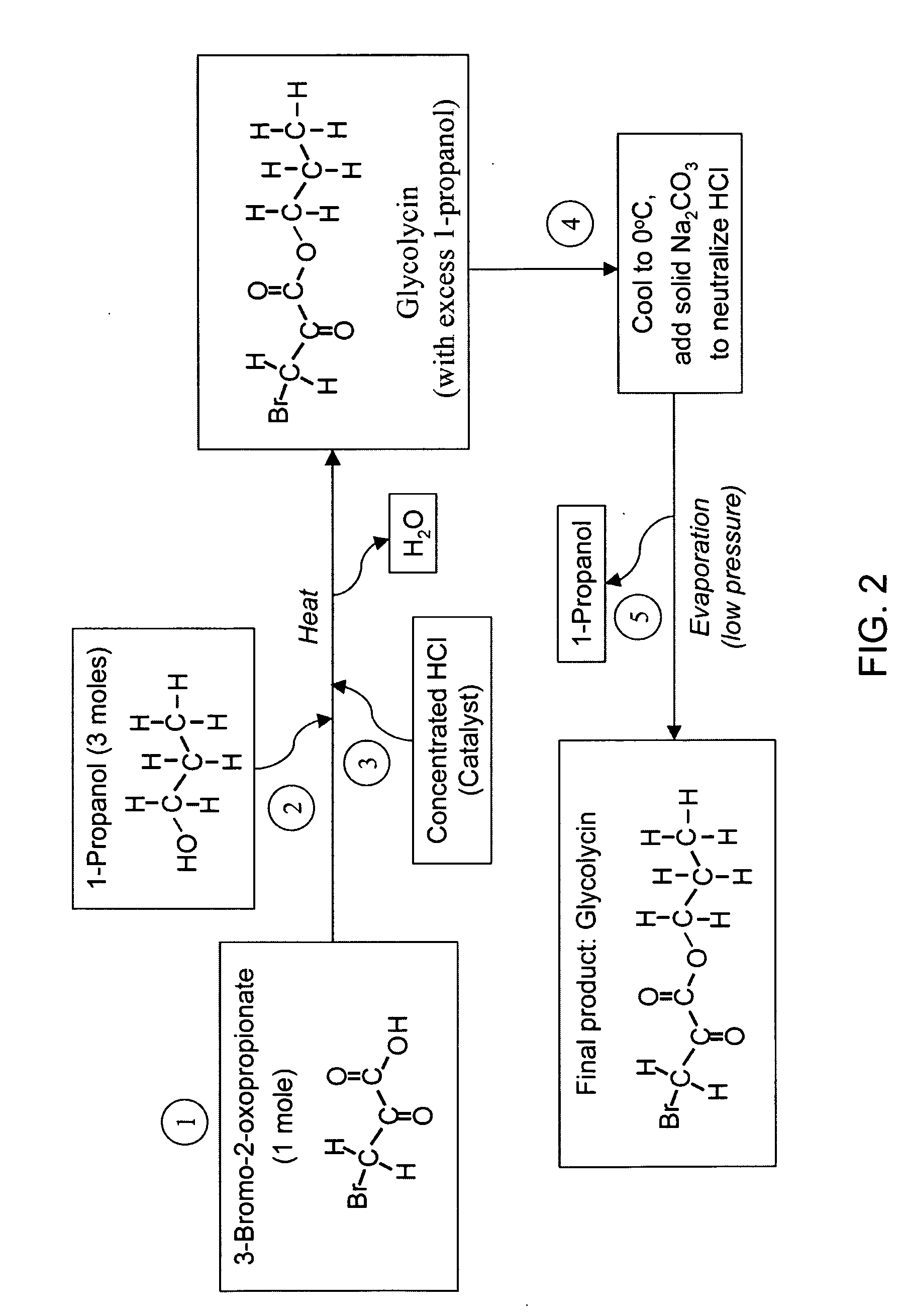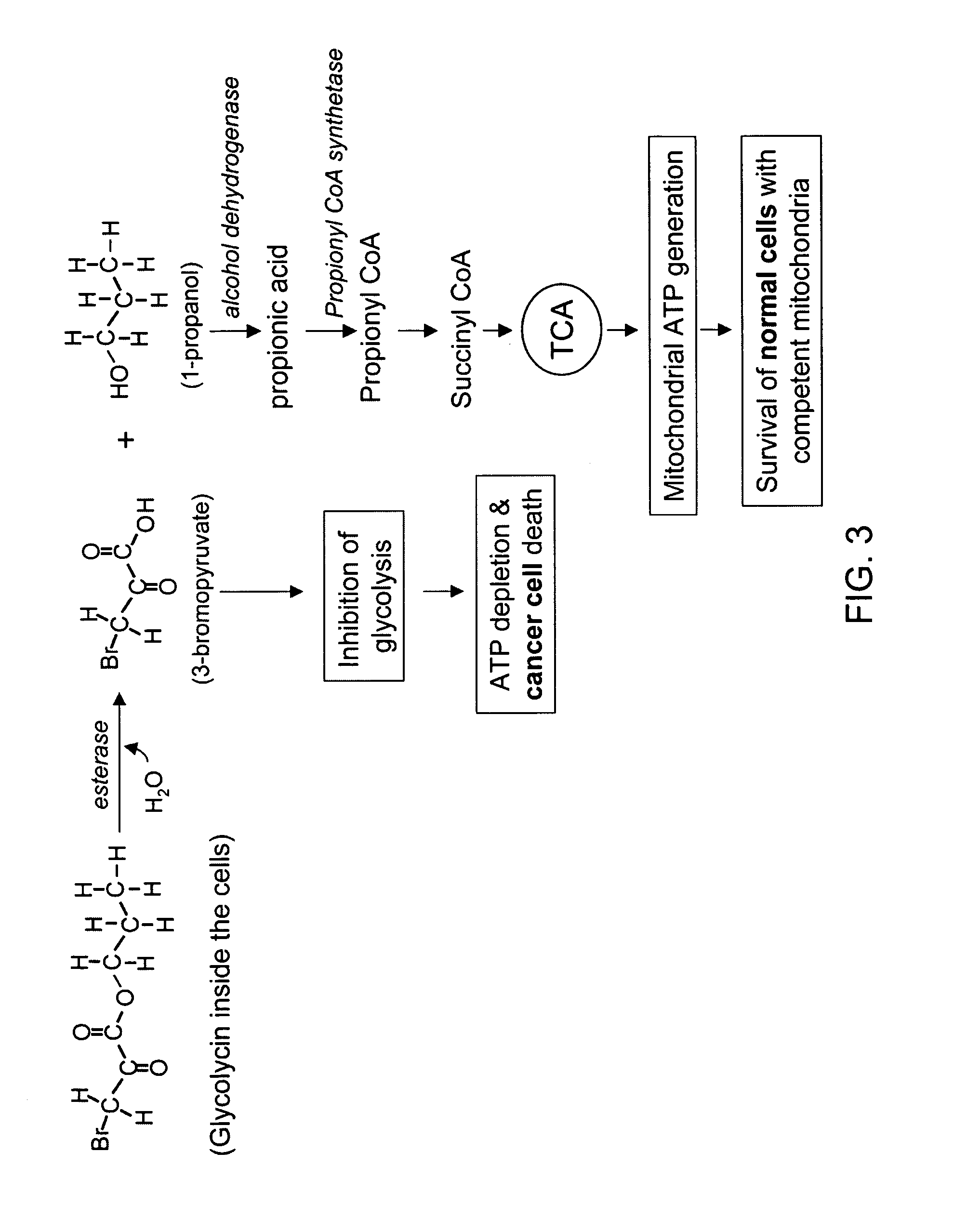Propyl 3-bromo-2-oxopropionate and derivatives as novel anticancer agents
a technology of propyl-3 bromo-2 oxopropionate and derivatives, applied in the field of cell biology, pharmacology and cancer therapy, to achieve the effects of enhancing therapeutic activity and selectivity, effectively treating cancer, and overcoming drug resistance of a cancer
- Summary
- Abstract
- Description
- Claims
- Application Information
AI Technical Summary
Benefits of technology
Problems solved by technology
Method used
Image
Examples
examples
[0227] The following examples are included to demonstrate preferred embodiments of the invention. It should be appreciated by those of skill in the art that the techniques disclosed in the examples that follow represent techniques discovered by the inventor to function well in the practice of the invention, and thus can be considered to constitute preferred modes for its practice. However, those of skill in the art should, in light of the present disclosure, appreciate that many changes can be made in the specific embodiments which are disclosed and still obtain a like or similar result without departing from the spirit and scope of the invention Example 1
Glycolycin
[0228] (1) Chemical Structure
[0229] Glycolycin (propyl 3-bromo-2-oxopropionate, or 3-bromo-2-oxopropionic acid propyl ester, or propyl 3-bromopyruvate) is a small molecular weight anticancer agent. It has the chemical formula of C6O3H9Br, and a molecular weight of 209. The chemical structure of Glycolycin is shown in F...
example 2
E-Glycolycin and M-Glycolycin
[0234] E-Glycolycin (Ethyl 3-bromo-2-oxopropionate, or 3-bromo-2-oxopropionic acid ethyl ester) has the chemical formula of C5O3H7Br and a molecular weight of 195, whereas M-Glycolycin (Methyl 3-bromo-2-oxopropionate, or 3-bromo-2-oxopropionic acid methyl ester) has the chemical formula of C4O3H5Br and a molecular weight of 181. The chemical structures of E-Glycolycin and M-Glycolycin are shown in FIG. 9.
[0235]FIG. 9 also illustrates exemplary methods to prepare E-Glycolycin and M-Glycolycin. All starting materials can be obtained from commercial sources, for example. The major components include 3-bromo-2-oxopropionate, ethanol, methanol, concentrated hydrochloric acid (HCl), and sodium carbonate (Na2CO3, or alternatively sodium bicarbonate NaHCO3). Similar to the preparation of Glycolycin, the principal chemical reaction to produce E-Glycolycin or M-Glycolycin is also the esterification of 3-bromo-2-oxopropionate by proper alcohols. Esterification of...
example 3
S-Glycolycin(1) Chemistry
[0237] S-Glycolycin (Sodium 3-bromo-2-oxopropionate carbonic acid) has the following chemical formula: NaC3H3BrO3.H2CO3 (Formula weight: 251).
[0238] As illustrated in FIG. 10, in aqueous (water) solution the components of S-Glycolycin, sodium 3-bromo-2-oxopropionate (NaC3H3BrO3) and carbonic acid (H2CO3), may form hydrogen bonds and stabilize the compound. The interaction between the hydrogen of carbonic acid and the halogen of 3-bromo-2-oxopropionate minimizes the hydrolysis of the Br-C3 bond. However, carbon dioxide (CO2) may be released from Glycolycin solution, and thus change the molar ratio of sodium 3-bromo-2-oxopropionate (NaC3H3BrO3) and carbonic acid (H2CO3). The amount of CO2 released will depend on the temperature and air pressure (PCO2) within the container.
[0239] In a particular aspect of the invention, the sodium 3-bromo-2-oxopropionate portion of S-Glycolycin is the component responsible for its anticancer activity, whereas the carbonic ac...
PUM
| Property | Measurement | Unit |
|---|---|---|
| Composition | aaaaa | aaaaa |
| Structure | aaaaa | aaaaa |
| Electrical resistance | aaaaa | aaaaa |
Abstract
Description
Claims
Application Information
 Login to View More
Login to View More - R&D
- Intellectual Property
- Life Sciences
- Materials
- Tech Scout
- Unparalleled Data Quality
- Higher Quality Content
- 60% Fewer Hallucinations
Browse by: Latest US Patents, China's latest patents, Technical Efficacy Thesaurus, Application Domain, Technology Topic, Popular Technical Reports.
© 2025 PatSnap. All rights reserved.Legal|Privacy policy|Modern Slavery Act Transparency Statement|Sitemap|About US| Contact US: help@patsnap.com



